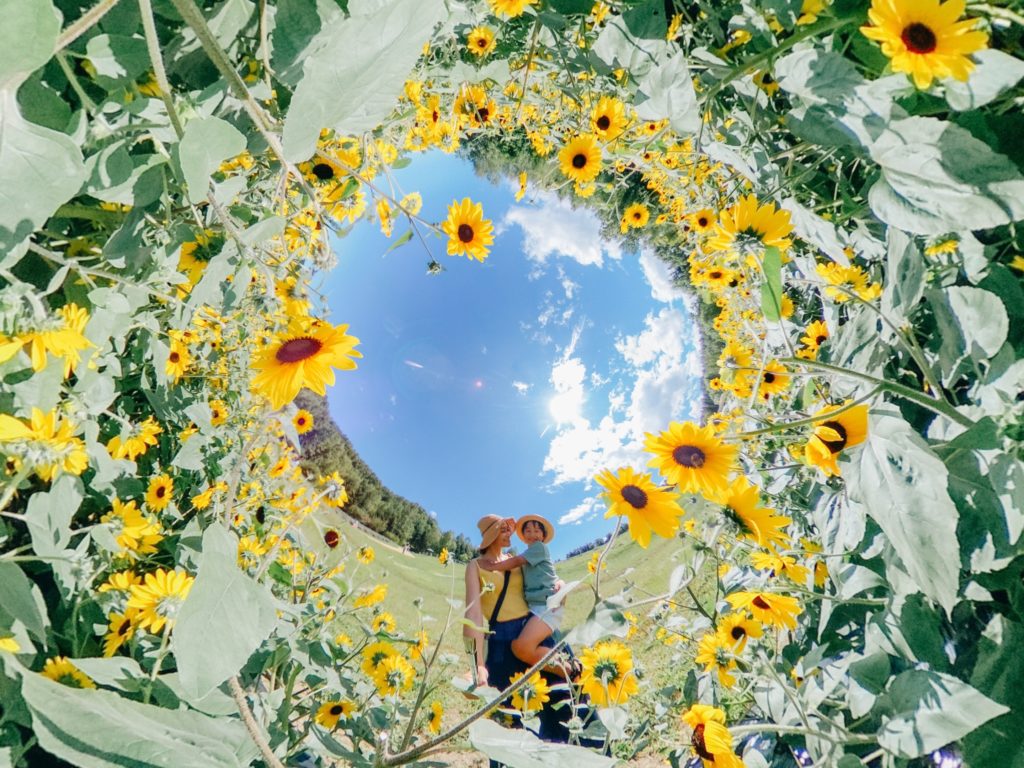Note: Support for the THETA+ app has ended in January 2023.
https://topics.theta360.com/en/news/2022-10-27/
Simply put, a 360-degree camera is a camera that can shoot in all directions: up, down, left, right, front and back.

You might have seen such images recently on the internet, particularly on real estate websites. A 360-degree camera allows you to take images that make you feel as if you were actually in the location. Let’s see how it works!
How 360 degree cameras work
The RICOH THETA 360-degree camera is equipped with two wide-angle lenses with a field of view over 180 degrees. The camera takes a photo through each lens at the same time. The borders of the images captured by each lens are stitched together to generate 360-degree photographs and videos. Modern optics and image processing allow high-precision and high-speed image stitching resulting in joints that are almost invisible.
The photographer can instantly take a 360-degree spherical image by simply pressing the shutter button without any special consideration. There is no need to rotate or move the camera.

RICOH THETA is designed around the idea that anyone should be able to easily enjoy 360-degree shooting. This is why it is equipped with two lenses in a slim body and combines two images to generate a 360-degree image. However, there are actually other methods of taking 360 degree images such as using cameras with 3 or more lenses as well as shooting with a camera such as a DSLR and then synthesizing 360 images using software.
Equirectangular—the main image format for 360-degree cameras
Images taken with cameras such as DSLRs, mirrorless cameras, and smartphones are generally saved as rectangular images with aspect ratios of 3:2, 4:3, or 16:9. 360 degree cameras convert a spherical image into an omnidirectional planar image. This format is called ‘equirectangular.’

*Spherical image taken with THETA in equirectangular format
Equirectangular projection is a standard format for VR and 360 cameras. That is to say, it is similar to the picture of a flattened three-dimensional globe or a map in Mercator projection. THETA converts the original data taken by two fisheye lenses into a spherical image (in equirectangular format). This is done in THETA itself or on the smartphone.
A dedicated viewer or application is required to view 360 images
You need to install a dedicated viewer or application to view and edit spherical images taken with THETA. We provide three apps: RICOH THETA for mobile for shooting, viewing, and sharing; THETA+ for mobile for editing; and RICOH THETA for PC for converting, browsing, and sharing the captured spherical images.

*Edited with THETA+ editing app
Facebook also supports viewers that display 360 degree equirectangular images, so feel free to share images and videos taken with THETA with friends and family.
We hope your 360 world grows!
For more details, please visit the product page.

Credit: Shawna Rodgers, @minatymom103




.jpg)


.svg)




